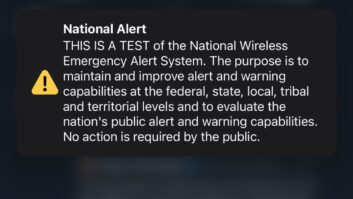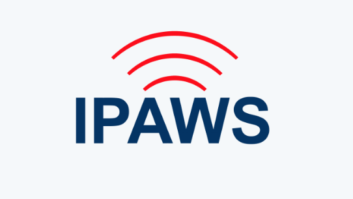
FEMA wants to know what stations think about efforts to update the Emergency Alert System.
To that end, the Alaska Broadcasters Association 2010 convention featured the first FEMA Integrated Public Alert and Warning System EAS test workshop, the first of several such meetings that FEMA plans in various states, I hear.
Manny Centeno, FEMA IPAWS program manager, presented the material at the event earlier this month. He reviewed findings from the Alaska EAS exercise held last January, sharing future improvement strategies in time for the next Alaska EAS test planned for sometime in 2011.
The feds like conducting EAS tests in Alaska because so many broadcasters participate in EAS there, and because a message can be transmitted without triggering an alert in another state. Centeno tells me he also conducted a live demonstration of an Emergency Action Notification, and a CAP-to-EAS message demonstration using the IPAWS OPEN Aggregator to broadcasters, engineers and station operators.
An EAN is a federal level alert; a big difference between it and a normal EAS message is there is no two-minute time limit on an EAN. If an event is so catastrophic that the president needs to address the nation, he might need more than two minutes to convey information. During the EAN test in Alaska in January, audio was aired for 2-1/2 minutes “partly to make sure the devices can handle a longer message,” Centeno told me.

Manny Centeno, at podium, FEMA IPAWS program manager, and fellow panelist Bryan Fisher, left, chief of operations for the Alaska Division of Homeland Security and Emergency Management, provide details on the previous Alaska EAS exercise EAN audio message. Some 50 people were in the room for this month’s meeting, he estimated. Questions from ABA members included what happens if the EAN repeats and how to manage the audio levels. “We spoke to many people one-on-one about some of their issues,” and explained how to mitigate both of these situations specifically, he said.
In addition to ABA participation, the Alaska Division of Homeland Security and Emergency Management, the FCC and NOAA, supports FEMA’s outreach efforts. Centeno is part of the FEMA IPAWS Program Management Office, managed by Antwane Johnson, division director.
Numerous questions surround EAS these days, and any outreach by FEMA is a good thing.










